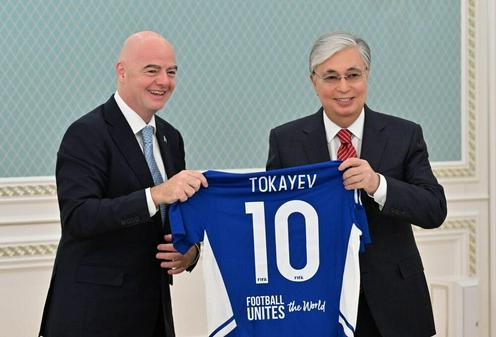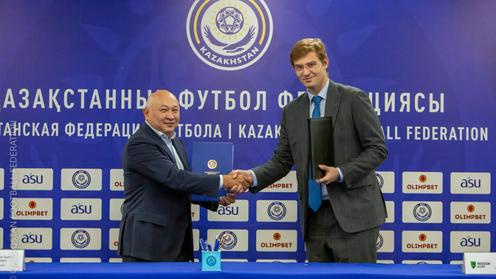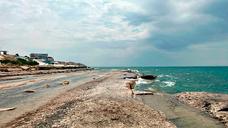During the Soviet era, there was an unspoken rivalry between Kazakhstan and Uzbekistan — including in sports. In the 1970s, for example, Tashkent opened an ice arena essentially to compete with its neighbors. As a result, the republic made it into the Guinness Book of Records as the world’s southernmost region where ice hockey was being developed. But unlike Kazakhstan, Uzbekistan did not achieve hockey fame at the time.
Now the situation is reversed. Kazakhstanis are looking with envy at their neighbors’ success: Uzbekistan has qualified for the FIFA World Cup and is sending its players to leading European clubs. Yet not so long ago, the rivalry between Kairat and Pakhtakor was one of the biggest events in Soviet football.
Fergana discussed Kazakhstan’s chances of catching up with Uzbekistan with analyst, international expert in economics and law, FIFA expert, former candidate for the presidency of the Russian Football Union, developer of football development programs for Uzbekistan and Tajikistan, and PhD in Economics Alisher Aminov.
— Now there is an active debate in Kazakhstan about whether the decision to move from the Asian Football Confederation (AFC) to UEFA was the right one.
— The move to Europe was made in the hope of strengthening national football, believing that the European development model was more effective. But time has shown that—judging by the performances of both the national teams and the clubs—there has been no real progress. There have been occasional successes: the national team’s surge under Adiev, when they won their group in the Nations League and fought for a Euro berth, and the appearances of Astana and later Kairat in the Champions League group stage. But we’re not seeing an actual trend.
Moreover, if we compare the development of football in Uzbekistan and Kazakhstan, in recent years Uzbek football has clearly pulled ahead—especially in the performance of its national teams—even though Uzbekistan still has plenty of unresolved systemic issues in football.
— Recently, Kazakhstan’s president Kassym-Jomart Tokayev defined football development as a national priority, including governance reform, removing clubs from direct government financing, and infrastructure projects. Is this a turning point? What role should the federation play?
— It’s too early to say. The most important thing is to launch sweeping reform of the governance system. Key decision-makers should be football stakeholders—not government officials or business magnates.
The president is frustrated by excessive spending on professional football and the national teams’ and clubs’ long-standing lack of results on the international stage—that in itself is a signal. Once again: Tokayev’s patience is running out. Regional and municipal administrations spend huge amounts on clubs, but the clubs earn nothing and achieve nothing internationally. There are no high-level players capable of competing in Europe. And it’s obvious that the Executive Committee of the Kazakhstan Football Federation (KFF)—its ruling body that makes all major decisions—is not composed predominantly of football stakeholders. It is dominated by big business and government representatives, which gives reason to believe that the decisions under discussion may be oriented toward the interests of a narrow group.
On the other hand, there is also the issue of whether football stakeholders themselves are ready to make competent systemic decisions: over many years they have not received proper training in economics or sports law.
— Where would you recommend the reforms begin?
— It’s difficult to assess without full analytics. We need comprehensive data across all areas: youth football, specialist training, the federation’s governance model, an evaluation of the basic sports law, and an analysis of professional competitions. As a reference point, both the positive and negative experiences of recent reforms in Uzbekistan should be studied.
— For example?
— On April 7, 2023, President Shavkat Mirziyoyev of Uzbekistan signed a decree “On additional measures for the comprehensive development of grassroots and professional football.” The document introduced many innovations, yet a number of its provisions have been discussed by officials year after year and remain unresolved for decades. Since the country gained independence 34 years ago, more than a dozen such decrees have been issued, but their quality and effectiveness remain low.
The system involves several layers of decision-making, but in Uzbekistan — as in Kazakhstan — the state remains the primary authority. In only a few countries do heads of state personally engage in such documents rather than the sporting community. Since this vertical system exists, it is crucial to determine whether qualified experts within the Presidential Administration are capable of preparing professional materials and recommendations on sports and football policy.
Clearly, the Ministry of Sports, the leadership of the Kazakhstan Football Federation (KFF), the president’s advisor, and the head of the Presidential Administration all play a key role in shaping the president’s understanding of systemic football problems and their solutions. If the country’s leadership is truly ready to change the system, reforms should begin with a thorough analysis of the situation at every level of football infrastructure.
— What options are there?
— In Kazakhstan, as in other post-Soviet states, the structure of football management should consist of four interconnected levels: the state, the professional level (the KFF, overseeing all areas), the regional level (regional federations), and youth development (reserve training).
For the sector to function effectively, key objectives must be addressed at each level while clearly defining where state involvement is necessary and where it becomes excessive. Kazakhstan should study the experience of advanced European football systems and, taking local specifics into account, develop practical projects with concrete implementation mechanisms.
These should then be submitted to the football community for discussion and approved by the KFF Executive Committee or Congress as part of a new development strategy and program. Only after that should work begin with government agencies — ensuring that proposals submitted to the president are not merely declarative or populist.
— But changes are being made.
— What we see now presented as reforms of Kazakhstan’s professional football? The state has announced that club shares will be sold to private business. Turlov, Lomtadze and Kan may acquire Kazakhstan’s clubs — this was stated by Prime Minister Olzhas Bektenov. But questions arise. What is the future of a club bought by large business in a given region if the necessary conditions are not in place? Are there any guarantees that private owners will continue to fund and maintain a team on a permanent basis, if the club operates within an inefficient economic system? With no functioning economic model, what sponsor other than a state-owned enterprise can the government “assign”? Private business can only be drawn in through pressure. At this stage, the truth remains unclear. In essence, without building a foundation, systemic problems that have gone unresolved for years are simply being shifted from the state to big business.
While the overwhelming majority of clubs were funded by regional akimats, with a combined annual budget of more than €100 million, clubs hardly earned anything. For years, the leagues were flooded with mid-level foreign players, while there was no steady flow of homegrown talent to Europe’s top leagues. A realistic scenario is that privately purchased clubs will, within a year, leave their new owners disillusioned and be treated as a “social responsibility” to the authorities. Some clubs could be left without owners and deteriorate, budgets would shrink, and players and academies would suffer.
Ideally, the state should take key structural decisions, while regulators build a system that enables clubs to operate sustainably. Otherwise, the result could mirror what happened in Uzbekistan: three years have passed since the presidential decree on club privatization, yet not a single team was acquired by private business. Even the Bekabad steel plant and the only privately owned club, Turon (Yaypan), withdrew their funding, forcing clubs to shut down. At the moment, not one Kazakhstan club can be considered a financially viable asset — they recover not even 10% of their expenses, revenue from broadcast rights is nearly zero, and attendance is also a problem. As a result, big business, still in one way or another tied to the state, will cover club expenses through the budget via tenders and state procurement.
— Who do you see leading the Kazakhstan professional football league?
— Finding a local specialist capable of fundamentally improving the league’s operations is difficult today. At the initial stage, I believe an optimal approach would be to invite a group of European managers from advanced football nations with proven experience in top leagues. But bringing in many foreign executives without building our own system for training specialists is not truly effective. If this route is taken, the KFF and KPL (Kazakhstan Premier League) leadership will have to change: independent professionals will not fit into the current hierarchy — they will start restructuring it. This is costly and initially painful, but the investment in building a strong league pays off many times over later.
If money is to be spent, it should not be on foreign coaches, but on top-tier executives. The pace of football development largely depends on a system for training management personnel for the KFF, regional federations, clubs and leagues — foremost their top managers. It would be logical to launch a two-year specialized program and continuing education courses. Yes, FIFA and UEFA offer management programs, and they are useful, but short-term courses are poorly adapted to Kazakhstan’s practical needs and do not solve pressing problems. Whether the KFF leadership is ready for such measures will become clear with time. Smart steps can yield results within a relatively short timeframe. Issues of governance exist in every country — the question is their scale and how they are addressed.
— Who else needs training in Kazakh football? Does the KFF have its own curriculum, and who developed it?
— There is still no answer. Leadership positions in regional federations, leagues, clubs, and academies are often held by people without professional education or qualifications — this contradicts FIFA and UEFA policies and frequently leads to systemic corruption. Coaches also suffer, forced to deal with incompetent club executives and to take on organizational tasks in addition to the training process. Clubs do not learn to create a compelling spectacle, to compete for fans’ attention, or to build relationships with sponsors. Market incentives — competition, customer focus, innovation — are weak.
In the former Soviet countries, I believe the first priority should be a package of legislative initiatives. For example, there needs to be a law on supporting professional sports teams through regional budgets and state-owned companies. During the transition period before clubs are transferred into private ownership, such a bill would establish principles, types of support, and mechanisms for monitoring the targeted use of funds. Budget transparency is a UEFA requirement and the right direction toward financial self-sufficiency.
— What document should form the basis for clubs in financial matters?
— The KFF Financial Regulations. They should introduce limits on salaries and other compensation, establish personal responsibility for executives who violate the regulations or decisions of KFF jurisdictional bodies and the Court of Arbitration for Sport (whether such a body exists in Kazakhstan remains an open question), require periodic certification of executives, define the role of the Financial Control Committee, demand documented confirmation of clubs’ financial solvency, and set spending limits for transfers, player maintenance, and other expenses.
— Where does it “hurt” the most right now, and why?
— Kazakhstan’s senior, youth, and junior national teams have shown a steady negative trend. Sports science in most of the post-Soviet region, including Kazakhstan, is practically destroyed. Youth coaches rely on foreign training manuals; domestic professional publications are rare, and there are no longer local scholars in football theory and methodology. Scientific and methodological conferences are held extremely infrequently, and professional coaches no longer engage in lecturing. No university in Kazakhstan provides fundamental training for sports lawyers, doctors, or psychologists.
— Why do major financial injections fail to produce systemic results?
— The economic model of the leagues is inefficient. State funding often leads to deterioration: it creates dependency among club executives and KFF members and encourages the expectation of handouts. The only true business asset of Kazakh professional football is the player himself. It is safe to say that, once the right conditions are created for developing and selling talent, Kazakh players will at least be able to offset part of the expenses in the near future. Meanwhile, FIFA and UEFA are far from consistent in following their own statutes. The system can be changed by uniting those with a rational approach.
— Where does the money actually go, and what does this lead to?
— Millions in taxpayer funds disappear into a “black hole”: maintaining clubs, paying numerous foreign players and foreign coaches, and imitating progress to stay near the bottom of the global top 100. This money never reaches doctors, educators, researchers, cultural institutions, or youth coaches. Kazakhstan’s clubs have brought in far too many weak foreign players, spending money on transfer fees, salaries, and signing bonuses. The leagues fail to develop, goals are vague, the gap between revenue and spending is chronic, and every time it ends with another appeal to the state. A private owner will not keep clubs afloat for long without mechanisms to recover part of the costs. When there is zero accountability, executives repeat the same mistakes. Public investment becomes a source of personal enrichment and a tool of influence. Loyal officials are appointed to key positions; administrative resources are then activated, illogical decisions are made, weak laws and fictitious licenses take effect — and the carousel spins until the next leadership change. The result is a narrow pool of national team candidates and poor performance. Under the banner of social responsibility, the funds of regional administrations and state-owned companies often go nowhere.
— What steps should the state and the KFF take immediately?
— A legal mechanism for financing must be developed and its parameters firmly established. Transfers cannot be paid from the state budget. During the transition period, funds from regional administrations should be deposited into separate accounts and used strictly for their intended purpose — organizing competitions, maintaining football schools, and improving infrastructure. Transfers should only come from actual football-related revenues or private sources. Spending more than €100 million a year solely on professional clubs is immoral. Here, I agree with the position of the President of Kazakhstan. The current model benefits those who profit from the system rather than those who develop it. I emphasize again: the priority should shift to systematically selling players to stronger European leagues rather than endless subsidies.
— Where can participation and reach be quickly increased with limited resources?
— In futsal. All schools and universities have sports halls. What is needed are permanent sections, school and university leagues for boys and girls, and student tournaments. This is an accessible and mass-entry point. In terms of developing a professional talent pool, a three-tier system is necessary at the national level, with a network of regional and district football centers. This is the approach followed by all developed European football countries.
— What needs to be assessed before starting reforms?
— A full audit of the sector: the state of youth football, staff training, the KFF management model, the legal framework for sports, and the economics of professional competitions. Then, a state subprogram for football development should be designed and launched within the existing sports program, regional centers should be created, stadiums reconstructed, and educational tracks developed for managers, coaches, doctors, lawyers, and psychologists based at Kazakh universities. An open professional dialogue between the KFF and the state is essential.
— Is it enough to simply write a perfect program for everything to work?
— No. Implementation is possible only with a change in the management system. The executive committee must be renewed, committees and working groups strengthened with professionals, decision-making made collegial, and personal accountability established. The problem is that over thirty years, the football community has been accustomed to a rigid vertical hierarchy and the role of a silent majority. But this can be changed with clear rules and real oversight.
— Can owning a club become a profitable business? How?
— Football is a dynamic field. Players constantly move between clubs and countries, creating frequent monetization opportunities: new contracts, bonuses, and image rights. There is a huge gap between academies and professional football. Many talented players leave not because of lack of ability, but due to insufficient funding. The main question is: do Kazakh clubs treat youth development as a central component of their financial and sporting strategies? Can academies operate as self-sufficient, high-return investment platforms? The ideal chain is: early identification, development within the system, integration into the first team, and sale at maximum value.
— What does the working model look like?
— The model works as follows: a player is acquired from an academy or scouted, their value is increased through development and exposure, they are sold at the right time, and the money is reinvested into the next cycle.
Successful club academies usually operate as self-sufficient, high-return investment platforms. Players are identified early, developed within the club, integrated into the first team, and sold at maximum value, typically after competing in international club competitions and national teams. This approach is structured, purposeful, and reproducible. These clubs don’t just produce players—they sell them intelligently. Any top club has always attracted talented players, but too often these talents went to waste: they didn’t play, weren’t sold, and didn’t generate revenue. With the right structure, clubs can turn their youth systems into more than a conveyor belt. They can become platforms that develop players, generate profit, and create long-term value. By controlling the process and participating beyond the transfer stage, successful clubs ensure that every developed player becomes part of the club’s long-term economic mechanism.
— Are there concrete examples?
— Over the past decade, French clubs have earned more from international transfers of homegrown players than any other country in the world. Between 2014 and 2024, they made €3.98 billion from selling players trained in France. On average, that’s nearly €400 million per year, highlighting France’s dominant position in player development and export. Only Brazil (€2.60 billion) and Spain (€2.24 billion) surpassed €2 billion, while the next six countries—Portugal, the Netherlands, England, Germany, Italy, and Argentina—only exceeded €1 billion. This shows that the international market for young talent trained in academies has become a key revenue source, especially for clubs outside Europe’s financial elite.
In many cases, developing and selling young players has become a core part of a club’s business model, sometimes more significant than rewards for actual sporting success. Transfers of homegrown players under 20 make up nearly a third of global revenue, particularly in Serbia (64.7%), Brazil (50.1%), Denmark (48.4%), Sweden (47.9%), and Belgium (43.8%). These figures reveal a key truth: early international transfers shape players’ careers and the economics of youth football. Data from CIES (International Centre for Sports Studies) also shows that in some countries—especially in South America and smaller European markets—the system is export-oriented, with leading academies acting as feeder centers for major European leagues.
— Why is France ahead?
— France’s dominance reflects an extensive and sophisticated academy infrastructure, including national and regional centers like Clairefontaine, Castelmaurou, Châteauroux, Le Mans, Dijon, Marseille, Ploufragan, Vichy, and Reims, as well as a wide network of development programs across two professional leagues. France’s ability to consistently produce elite players—from Mbappé and Camavinga to Koundé and Tchouaméni—ensures systematic success for national teams and fuels the export market, which underpins the financial stability of many clubs.
— But France isn’t the only example.
— Portuguese club Benfica earns over €100 million annually from youth development and player resale. Porto regularly generates €60–90 million. German club Bayer Leverkusen also reports roughly €100 million. These results are consistent and involve more than just star players. A striking case is Lenny Yoro: he established himself in Lille’s first team before 19, playing over 2,500 minutes, and was transferred for €62 million. Another example is Florian Wirtz: he debuted in the Bundesliga at 17, amassed over 10,000 minutes by the end of the 2024/25 season, and in June 2025 was sold from Bayer to Liverpool for £100 million, with add-ons raising the total to £116–150 million (~€136–150 million). These cases show that giving a player responsibility and regular playing time in controlled conditions rapidly increases their market value. Many others leave without playing professionally at all, stagnate, and fail to provide economic returns despite years of investment.
— How is this relevant to Kazakhstan?
— With an effective system for developing youth players, Kazakhstan—rich in football talent—could establish a continuous “production” of players. This would not only offset government and private spending on player development but also create a profitable business. The focus must be on developing a quality talent pool. Attitudes toward football reflect a country’s culture and education level. The public and fans naturally see football as just a game, but simplicity does not mean primitiveness. This issue is inevitably political, sensitive, and touches on various interests of the ruling elite.
-
 02 October02.10Football, Presidential StyleKFF Secretary General David Loria on the expansion of the Premier League, the new national team coach, and Tokayev’s role in Kazakh football
02 October02.10Football, Presidential StyleKFF Secretary General David Loria on the expansion of the Premier League, the new national team coach, and Tokayev’s role in Kazakh football -
 25 September25.09I Am Proud to Have Been Part of the Triumph of the Tajikistan National TeamGela Shekiladze sums up three years in Tajik football
25 September25.09I Am Proud to Have Been Part of the Triumph of the Tajikistan National TeamGela Shekiladze sums up three years in Tajik football -
 24 November24.11Here’s a New TurnRussian Scientists Revive the Plan to Irrigate Central Asia Using Siberian Rivers
24 November24.11Here’s a New TurnRussian Scientists Revive the Plan to Irrigate Central Asia Using Siberian Rivers -
 11 November11.11To Live Despite All HardshipUzbek filmmaker Rashid Malikov on his new film, a medieval threat, and the wages of filmmakers
11 November11.11To Live Despite All HardshipUzbek filmmaker Rashid Malikov on his new film, a medieval threat, and the wages of filmmakers -
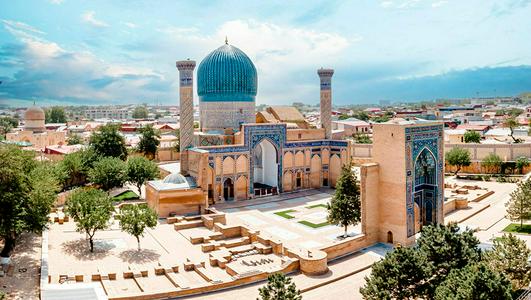 22 October22.10Older Than the Eternal CityWhat has Samarkand accomplished in its three thousand years of existence?
22 October22.10Older Than the Eternal CityWhat has Samarkand accomplished in its three thousand years of existence? -
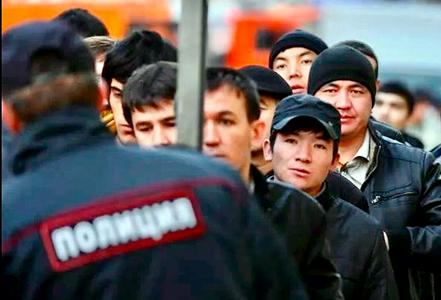 16 October16.10Digital Oversight and Targeted RecruitmentRussia Approves New Migration Policy for 2026–2030
16 October16.10Digital Oversight and Targeted RecruitmentRussia Approves New Migration Policy for 2026–2030

